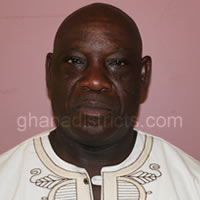Introduction
Understanding the dynamics of household is fundamental to the understanding of the characteristics of a population. The size of a population is mainly an aggregation of individual household members. The size, composition, and structure of households are influenced by socio-economic and demographic factors such as age at first marriage, length of time spent in school, cultural practices, occupation, material or financial abilities, capabilities of parents and couples, fertility and mortality rates. The total size of a population and its characteristics are, therefore, largely a reflection of what pertains within households while knowledge of household structure, composition, and headship provides important statistical tool for social and economic planning. (GSS, 2010 PHC Analytical Report) This chapter focuses on the size, household composition and headship, marital status, nationality, religious affiliation and literacy and education of the people residing in the District.
Household Size, Composition and Headship
Table 3.1 indicates that there are 29,359 households in the Amansie West District with nearly more than ninety percent (95.2%) in the rural areas compared with just 4.8 percent in the rural areas. The average household per house for the district according to the 2010 census is 1.5 with the rural areas recording a lesser number than the urban areas implying that there are less persons in a house in those settings than in the urban areas.
The average household size for the district is 4.5 comparing with 4.1 for the region as a whole and interestingly the average household size for the rural area is same for the total district.
Household composition
The two major types of family ties that inform household formation are the nuclear and extended family systems. The nuclear family is made up of the father, mother and children (adopted and/or biological). The extended family consists of the nuclear family, parents, siblings, and other relatives (Nukunya, 2003; OTHERS). The relationship becomes more complex when marital ties of all these relations, both matrilineal and patrilineal, are taken into consideration. Another important factor is the formation of households in which 25 members are not necessarily related by blood but live together and share common catering arrangements. The size of a community’s population is mainly an aggregation of individual household members in the community.
The size, composition, and structure of households are influenced by socio-economic, and demographic factors such as age at first marriage and birth, length of time spent in school, cultural practices, occupation, material or financial abilities, capabilities of parents and couples, fertility and mortality rates, and migration. The total size of a country’s population and its characteristics are, therefore, largely a reflection of what pertains within households.
Households constitute important units in planning for goods and services. Modernization, as a process whereby a society becomes increasingly rational, urban, and literate, has been identified by family sociologists as a key factor inducing changes over time in the size and structure of households. Decrease in the size of households gives indication of aspects such as decline in fertility, decline in the presence in the household of unrelated individuals such as lodgers and servants, and the fall in mortality which increases the length of time couples survive after their children are grown and have left their parental homes (Wogugu and Fayorsey, 1980).
Table 3.2 put the household population in the District at 132,443 with 66,481 males and 65,962 females. Household heads account for 22.2 percent whiles 28.8 percent of the male population are household heads. Similarly 15.5 percent of the female populations are household heads. Spouses represent 10.5 percent of population of household and out of this 43.9 percent are males and 42.1 percent are females.
Table 3.3 shows the household population by structure and sex. Head only households account for 3.6 percent of the population whilst nuclear families (head, spouse, and children) account for 31.2 percent. Extended families account for 20.1 percent and single parent extended and single parent nuclear account for 16.5 and 9.8 percent respectively. There is not much difference in terms of sex of household structure such that among single parent Nuclear males constitute 8.6 percent and females 11.1 percent. The proportion of male single parent extended is lower (1 3.9%) than female (19.1%).
Marital Status
Marriage is a customary practice recognized as a voluntary union between a man and woman as well as their families and sanctioned by law. The 2010 PHC focuses on the main legal systems of marriage as the basis for defining marital status by age, sex, education and household headship. Marriage has demographic, economic, socio-cultural and health implications as it sets the context for reproductive activities such as legitimizing entry into sexual activities and childbirth (Braun, 2005). Thus, in cases where there is lack of adequate data on age, duration of marriage can be used as basis for fertility estimation. Marital status is also used as one of the determinants of social status and an indicator of social responsibility, trust and achievement in some societies (Animasahun and Fatile, 2011). Marital status has implications for other demographic events such as family formation, migration demand for housing and residential-related services
Figure 3.1 indicate that 41.5 percent of the population 12 years and older are married whiles the never married constitute 36.9 percent. Among the population aged 15-19 years 86.5 percent are never married and for those aged 45-49 years 72.2 percent are married and as high as 35.7 percent above 65 years are widowed in the district according to the table.
The proportion that is separated account for 2.1 percent of the married population. Consensual union/ living together account for 10.4 percent of the population.
Table 3.4 indicates that 36.9 percent of the population 12 years and older have never married, 41.5 percent are married, with 4.7 percent and 4.3 percent are divorced and widowed respectively
The table also shows that in the district. 44.4 percent of the male population 12 year and older have never married whiles 40.4 percent are married. Consensual union/ living together and Widowed constitute 9.7 and 1.2 percent of the male population respectively. Married females on the other hand constitute 42.6 percent while the never married constitutes 29.6 percent of the female population 12 years and older. However, consensual unions/living together and the widowed constitute 11 and 7.4 percent of the female population respectively. A large proportion of males (94.1%) and females (94.7%) in the age group 12 -14 years have never married. About five percent (4.9%) of males in the same age group are married compare to females (3.9%).
Figure 3.2 shows population twelve years and older by marital status and level of education. A large proportion (63.0%) of persons who are married had basic education while 25 percent had no form of education. The data also indicate that only 0.3 percent had tertiary level of education.
Table 3.5 shows persons twelve years and older by sex, marital status and level of education. The table shows that in the district 25.0 percent of the population have no education, 63.4 percent have basic education and just 0.3 percent have tertiary education.
The data in Table 3.5 indicate that 10.2 percent of the never married male population 12 year and older have no education, 70.2 percent have basic education and 0.5 percent has tertiary level education. Also, 22.5 percent of married males have no education, 64.9 percent have basic education and 0.7 percent has tertiary level education.
On the other hand, 10.5 percent of the never married female population has no form of education, 74.6 percent has basic education and 0.2 percent has tertiary level education. However, 38.4 percent of Married females have no form of education whilst 57 percent has basic education and 0.1 percent has tertiary level education.
Table 3.6 shows persons twelve years and older by sex, marital status and economic activity status. Of the population that is in the various marriage categories in the district, 66.8 percent are employed, 2.8 percent unemployed and with 30.4 percent as economically not active.
Out of the population who are employed, the highest, 53.5 percent are married, 21.1 percent have never been married and 2.6 percent are separated. Of those who are unemployed, the highest, 46.1 percent have never been married, 35.4 percent are married and the lowest, 1.9 percent is separated. On the other hand 70.8 percent of the economically not active persons have never been married, 15.7 percent of them have been married and 1.2 percent is separated.
Nationality
Nationality is defined as the country to which a person belongs. Ghanaian nationals are classified as Ghanaian by birth, Dual Nationality and by naturalization. The population of Amansie West District by Nationality and sex is shown in Table 3.7. The table indicates that Ghanaians by birth constitute 96 percent of the population, dual nationality (1.7%) and naturalization (0.6%). Male Ghanaians by birth form 95.9 percent of the male population whereas female Ghanaians by birth constitute 96 percent of the female population.
Religious Affiliation
Table 3.8 indicates population by religion and sex. In terms of religious affiliation, the table shows that a large percentage (77.8%) of the people is Christians. Out of this Pentecostal/charismatic constitute 23.4 percent, Protestants 18.4 percent, Catholics 16 percent and other Christians 16 percent. Muslims constitute 7.9 percent and traditionalists constitute 0.5 percent. Those without any religious affiliation constitute 12.9 percent while the remaining 0.9 percent is part of small sects.
Information Communication Technology
Introduction
The role of Information Communication Technology (ICT) in the emerging economy of Ghana has been widely recognized at various levels. The recognition is reflected in actions such as the development and deployment of a national ICT infrastructure, institutional and regulatory framework for managing the sector, promoting the use of ICT in all sectors of the economy, implementing e-governance in all government institutions and the construction of a National Data Centre as well as Regional Innovation Centres. To understand some of these developments a module is included in the 2010 PHC on ownership and use of ICT facilities (GSS, 2010 PHC Analytical Report)
Ownership of Mobile Phones
The 2010 Population and Housing Census recorded a total of 8,049,408 mobile phone users in the country. This constituted 47.7 percent of the 16,886,306 population 12 years and older. The data shows that 32.7 percent of the population twelve years and older own mobile phones. Out of this, male ownership of mobile phones is 39.4 percent while the females owning mobile phones represent 26.4 percent implying that more males than females own mobile phone in the district according to the 2010 census.
Use of Internet
Internet has become a very useful communication facility for people, businesses and organizations. Some of the common uses of the Internet include electronic mailing, accessing information, conducting business transactions, social networking and shopping. According to the International Communication Union (2012), the percentage of individuals using the Internet continues to grow worldwide and by the end of 2011, about 2.3 billion people were using the Internet. However, there is a wide gap in access to Internet between the developed and developing countries as well as the urban and rural areas respectively. The data in Table 5.2 shows the number of people having access to mobile phones and internet facilities in the Amansie West District. The Table indicates that just 1.3 percent of the population above 12 years in the district has access to internet facility and this is represented by 1.9 percent males and 0.7 percent females which again shows that the access to internet is more predominant with males than females.
Household Ownership of Desktop or Laptop Computers
Desktop and laptop computers are useful for accessing and processing information, including the use of the Internet, electronic mail and other services. The table shows that 216 households representing 1.9 percent with 2.2 being males and 1.4 females which implies that more male heads than females own either a desktop/laptop computer in the district.
Date Created : 11/16/2017 7:36:45 AM






 facebook
facebook twitter
twitter Youtube
Youtube TOLL FREE 0800 430 430
TOLL FREE 0800 430 430 +233 593 831 280
+233 593 831 280 GPS: GE-231-4383
GPS: GE-231-4383 info@ghanadistricts.com
info@ghanadistricts.com Box GP1044, Accra, Ghana
Box GP1044, Accra, Ghana